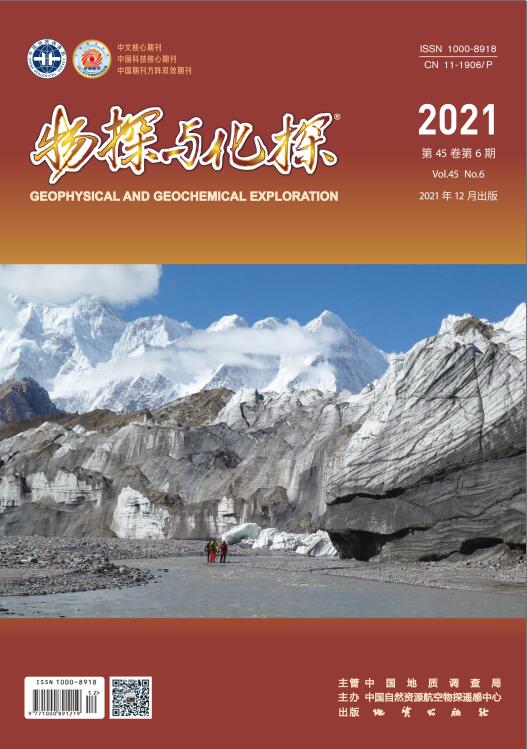| [1] |
Dilay A, Eastwood J. Spectral analysis applied to seismic monitoring of thermal recovery[J]. The Leading Edge, 1995, 14(11):1117-1122.
Google Scholar
|
| [2] |
Stockwell R G, Mansinha L, Lowe R P. Localization of the complex spectrum:the S transform[J]. IEEE Trans Signal Process, 1996, 44(4):998-1001.
Google Scholar
|
| [3] |
Goloshubin G M, Korneev V A. Seismic low-frequency effects from fluid-saturated reservoir[J]. SEG Technical Program Expanded Abstracts, 2000, 19:1671-1674.
Google Scholar
|
| [4] |
Goloshubin G M, Korneev V A, Vingalov V M. Seismic low-frequency effects from oil-saturated reservoir zone[J]. SEG Technical Program Expanded Abstracts, 2002, 21:1813-1816.
Google Scholar
|
| [5] |
Korneev V A, Goloshubin G M, Daley T M, et al. Seismic low-frequency effects in monitoring fluid-saturated reservoirs[J]. Geophysics, 2004, 69(2):522-532.
Google Scholar
|
| [6] |
Goloshubin G, VanSchuyver C, Korneev V, et al. Reservoir imaging using low frequencies of seismic reflections[J]. The Leading Edge, 2006, 5:527-531.
Google Scholar
|
| [7] |
卢明辉, 巴晶, 杨慧珠, 等. 双相介质分界面上弹性波的反射与透射[J]. 地球物理学进展, 2007, 22(5):1439-1445.
Google Scholar
|
| [8] |
Lu M H, Ba J, Yang H Z, et al. Reflection and transmission of elastic waves from a boundary of two-phase media[J]. Progess in Geophysics, 2007, 22(5):1439-1445.
Google Scholar
|
| [9] |
He Z H, Xiong X J, Bian L E. Numerical simulation of seismic low-frequency shadows and its application[J]. Applied Geophysics, 2008, 5(4):301-306.
Google Scholar
|
| [10] |
孙万元, 张会星, 孙杨, 等. 地震波衰减和频散属性的提取及其在油气检测中的应用[J]. 中国海洋大学学报:自然科学版, 2013, 43(10):83-87.
Google Scholar
|
| [11] |
Sun W Y, Zhang H X, Sun Y, et al. Apply s-transform to extract the attenuation and dispersion attributes of the seismic wave to detect oil and gas[J]. Periodical of Ocean University of China:Science & Technology Edition, 2013, 43(10):83-87.
Google Scholar
|
| [12] |
胡军辉, 文晓涛, 许艳秋, 等. 利用黏滞—弥散波动方程理论进行油水识别[J]. 石油地球物理勘探, 2016, 51(3):556-564.
Google Scholar
|
| [13] |
Hu J H, Wen X T, Xu Y Q, et al. Oil-water recognition based on diffusive-viscous wave equation[J]. OGP, 2016, 51(3):556-564.
Google Scholar
|
| [14] |
张广智, 郑静静, 印兴耀, 等. 基于Curvelet变换的角度流体因子提取技术[J]. 物探与化探, 2011, 35(4):505-510.
Google Scholar
|
| [15] |
Zhang G Z, Zheng J J, Yin X Y, et al. The technique for extracting angle fluid factor based on curvelet transform[J]. Geophysical and Geochemical Exploration, 2011, 35(4):505-510.
Google Scholar
|
| [16] |
黄捍东, 汪佳蓓, 郭飞. 敏感参数分析在叠前反演流体识别中的应用[J]. 物探与化探, 2012, 36(6):941-946.
Google Scholar
|
| [17] |
Huang H D, Wang J B, Guo F. The application of sensitive parameters analysis to fluid identification based on pre-stack inversion[J]. Geophysical and Geochemical Exploration, 2012, 36(6):941-946.
Google Scholar
|
| [18] |
李红梅. 弹性参数直接反演技术在储层流体识别中的应用[J]. 物探与化探, 2014, 38(5):970-975.
Google Scholar
|
| [19] |
Li H M. The application of elastic parameters direct inversion to reservoir fluid identification[J]. Geophysical and Geochemical Exploration, 2014, 38(5):970-975.
Google Scholar
|
| [20] |
李相文, 刘永雷, 但光箭, 等. 方位AVO 技术在碳酸盐岩缝洞型储层含流体预测中的研究与应用[J]. 物探与化探, 2016, 40(1):129-134.
Google Scholar
|
| [21] |
Li X W, Liu Y L, Dan G J, et al. The study and application of azimuthal AVO analysis technique for fluid-containing prediction of fractured-vuggy carbonate rocks reservoir[J]. Geophysical and Geochemical Exploration, 2016, 40(1):129-134.
Google Scholar
|
| [22] |
李灿, 归平军. 纵横波速度比在东胜气田致密低渗储层流体识别中的应用[J]. 物探与化探, 2019, 43(3):536-542.
Google Scholar
|
| [23] |
Li C, Gui P J. VP/VS applied to fluid identification of tight sandstone reservoir of Dongsheng gas field[J]. Geophysical and Geochemical Exploration, 2019, 43(3):536-542.
Google Scholar
|
| [24] |
Lu W K, Li F Y. Seismic spectral decomposition using deconvolutive short-time Fourier transform spectrogram[J]. Geophysics, 2013, 78(2):V43-V51.
Google Scholar
|
| [25] |
朱恒, 文晓涛, 金炜龙, 等. 基于反褶积短时傅立叶变换的油气检测[J]. 地球物理学进展, 2015, 30(5):2354-2359.
Google Scholar
|
| [26] |
Zhu H, Wen X T, Jin W L, et al. Oiland gas detection based on deconvolutive short-time Fourier transform[J]. Progress in Geophysics, 2015, 30(5):2354-2359.
Google Scholar
|
| [27] |
张懿疆, 文晓涛, 刘婷, 等. 基于反褶积广义S变换的地震频谱成像方法研究[J]. 科学技术与工程, 2017, 17(15):12-18.
Google Scholar
|
| [28] |
Zhang Y J, Wen X T, Liu T, et al. Seismic spectral imaging method based on deconvolutive generalized S-transform[J]. Science Technology and Engineering, 2017, 17(15):12-18.
Google Scholar
|
| [29] |
张会星, 何兵寿, 姜效典, 等. 利用地震波在双相介质中的衰减特性检测油气[J]. 石油地球物理勘探, 2010, 45(3):343-349.
Google Scholar
|
| [30] |
Zhang H X, He B S, Jiang X D, et al. Utilizing attenuation characteristic of seismic wave in dual-phase medium to detect oil and gas[J]. Oil Geophysical Prospecting, 2010, 45(3):343-349.
Google Scholar
|
| [31] |
Biot M A. Theory of porpagation of elastic waves in a fluid-saturated porous solid:Low-frequency range[J]. Acoust. Soc. Amer., 1956, 28(2):168-178.
Google Scholar
|
| [32] |
Amos Nur. 双相介质中波的传播[M].许云译. 北京: 石油工业出版社, 1986.
Google Scholar
|
| [33] |
Amos Nur. Wave propagation in the two-phase medium[M].Xu Yun Trans. Beijing: Petroleum Industry Press, 1986.
Google Scholar
|
| [34] |
严海滔, 黄饶, 周怀来, 等. 同步挤压广义S 变换在南海油气识别中的应用[J]. 地球物理学进展, 2019, 34(3):1229-1235.
Google Scholar
|
| [35] |
Yan H T, Huang R, Zhou H L, et al. Application of Nanhai oil and gas identification based on synchrosqueezing generalized S transform[J]. Progress in Geophysics, 2019, 34(3):1229-1235.
Google Scholar
|






 DownLoad:
DownLoad: